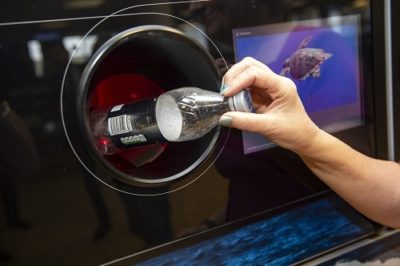The group hopes the research could inform policy concerning how to deal with material left in the household bin once the maximum recycling, composting and waste minimisation levels have been reached.
|
“Hypothetical” scenario – main materials in residual waste assuming maximium recycling (in tonnes) |
|
| Other paper and card | 77,589 |
| Construction/demolition waste | 75,406 |
| Furniture | 40,199 |
| Disposable nappies | 33,207 |
| Mixed bagged waste | 18,955 |
| Other combustibles | 16,035 |
| Other organic wastes | 8,624 |
| Other packaging | 7,791 |
| Packaging film | 6,003 |
| White goods | 3,680 |
The project is being carried out by researchers in the Belfast offices of the consultancy EnvironCentre, and has published the first stage of its findings, a report estimating the composition of residual waste.
It takes two scenarios to analyse materials within residual waste – one in which the hypothetical maximum recycling and re-use has been carried out, and one “practical” scenario that assumes a certain proportion of householders do not recycle everything they can, taking current best practice capture rates.
Where as the government has an aspiration to reduce the amount of waste that is not recycled or composted to 12.2 million tonnes in 2020, the two scenarios in the Friends of the Earth report suggest that figures of 298,000 tonnes and 750,000 tonnes respectively can be achieved.
Materials
|
“Practical” scenario – main materials in residual waste assuming current best practice capture rates (in tonnes) |
|
| Kitchen waste | 159,632 |
| Furniture | 134,674 |
| Construction/demolition waste | 85,788 |
| Other paper and card | 77,708 |
| Newspapers and magazines | 40,923 |
| Mixed bagged waste | 34,463 |
| Disposable nappies | 33,207 |
| Cardboard boxes/containers | 25,821 |
| Garden waste | 23,601 |
| Packaging glass | 23,090 |
The most significant types of residual waste in the hypothetical scenario were found to be “other paper and card” – things like wallpaper and tissues – followed by construction and demolition waste, furniture, disposable nappies and mixed bagged waste.
Wastes in the practical scenario were similar, except the largest tonnage was kitchen waste. In the practical scenario, plastic packaging – which has one of the highest public profiles as a waste problem – actually came in just outside the top 10 materials by weight.
The next stage of Friends of the Earth's research will look at how policies can be developed to ensure that even the residual materials are recycled or reused.
Commenting on the research project, Dr Michael Warhurst, senior waste and resources campaigner at Friends of the Earth, said: “This fascinating research shows us the both the challenge and the opportunity that we have ahead of us in taking the long-term direction of phasing out residual waste.”
Dr Cathy Maguire, principle researcher with EnviroCentre, said the researchers would now be seeking out waste management stakeholders in order to identify the policy measures that could have “real impact on significantly reducing residual waste”.
She added: “We are also recommending that the government improves its data gathering in this area, as we found that the data available is poor, and does not currently provide a robust basis for decision making and policy development, for example, to enable links to be made with product policy.”
- In this week's letsrecycle.com Opinions column, Peter Mills of Poole-based treatment technology firm New Earth Solutions asks how local authorities can agree long-term contracts to deal with residual waste.








Subscribe for free